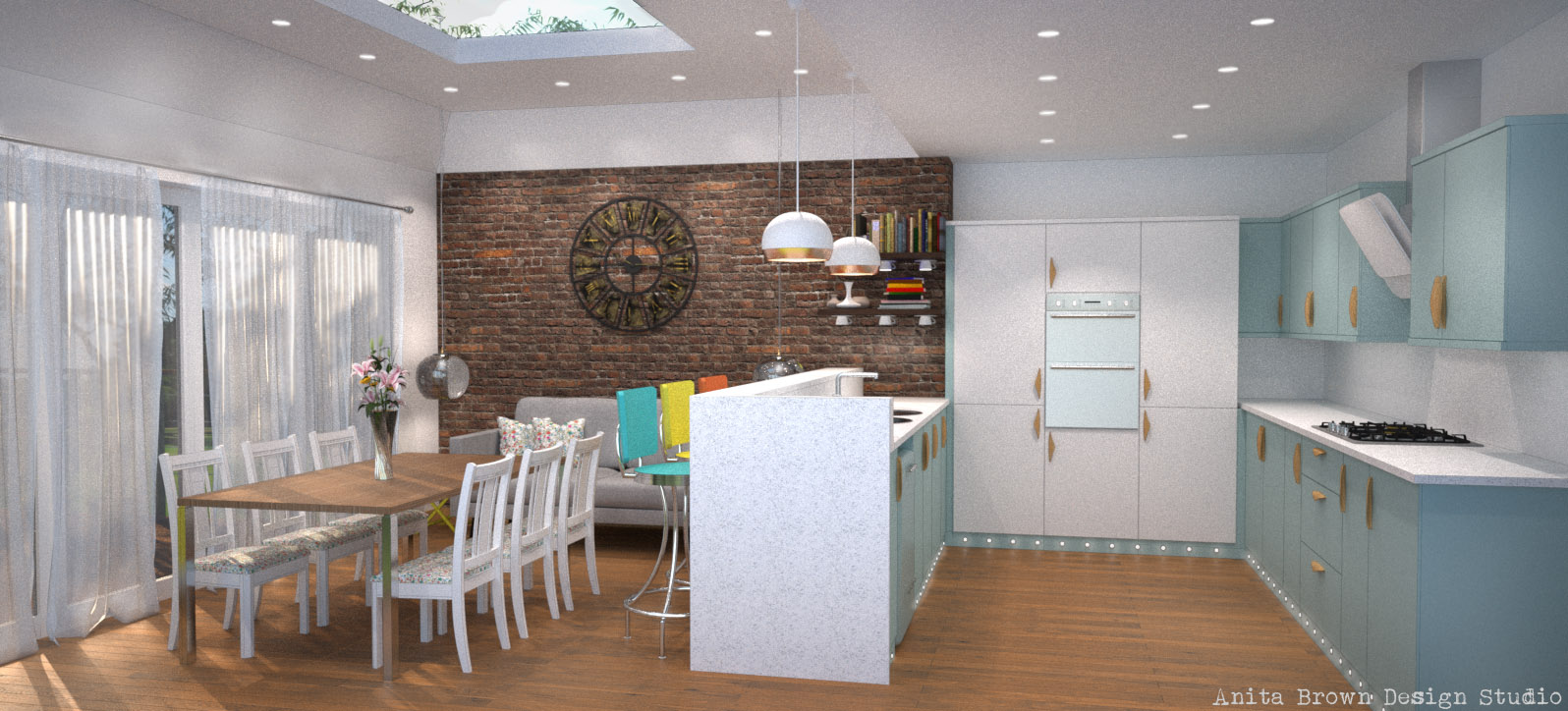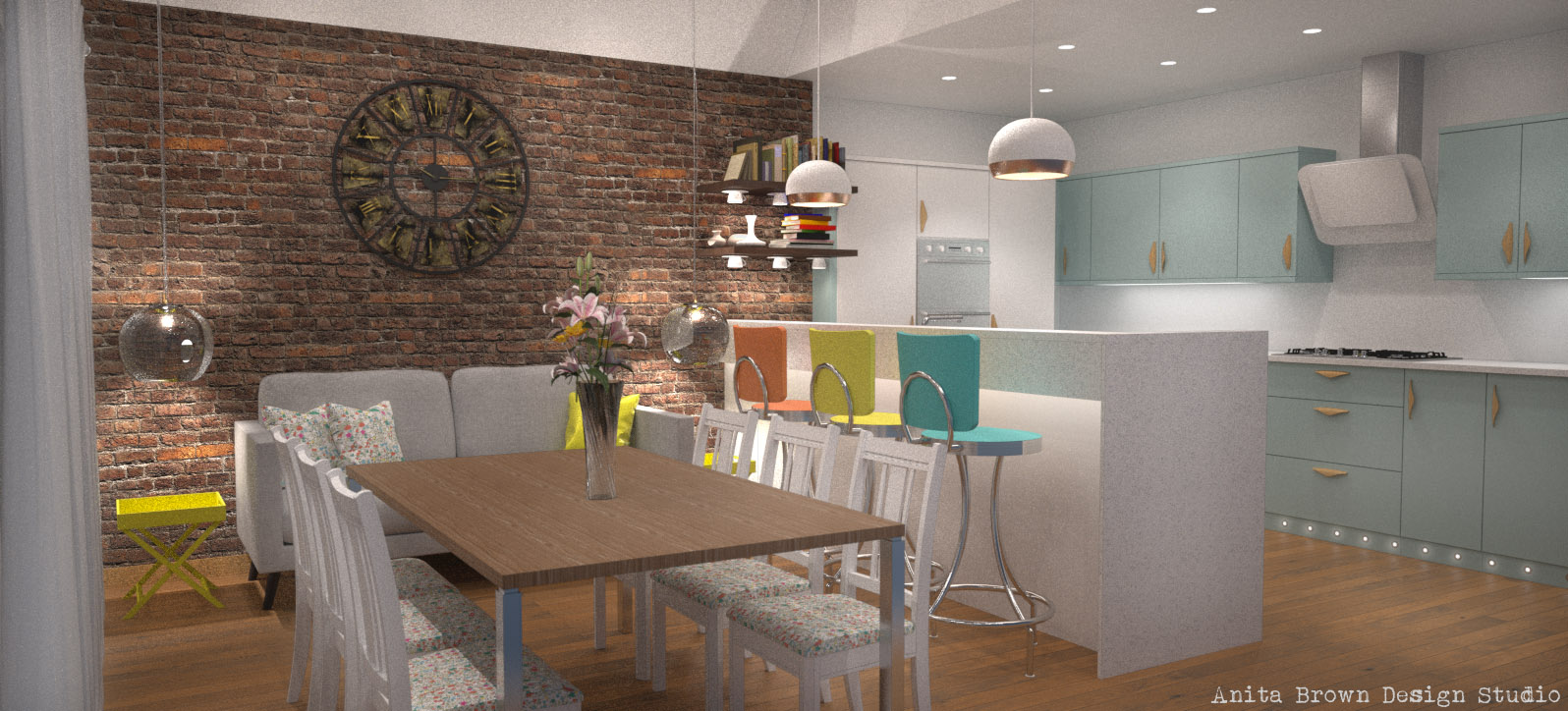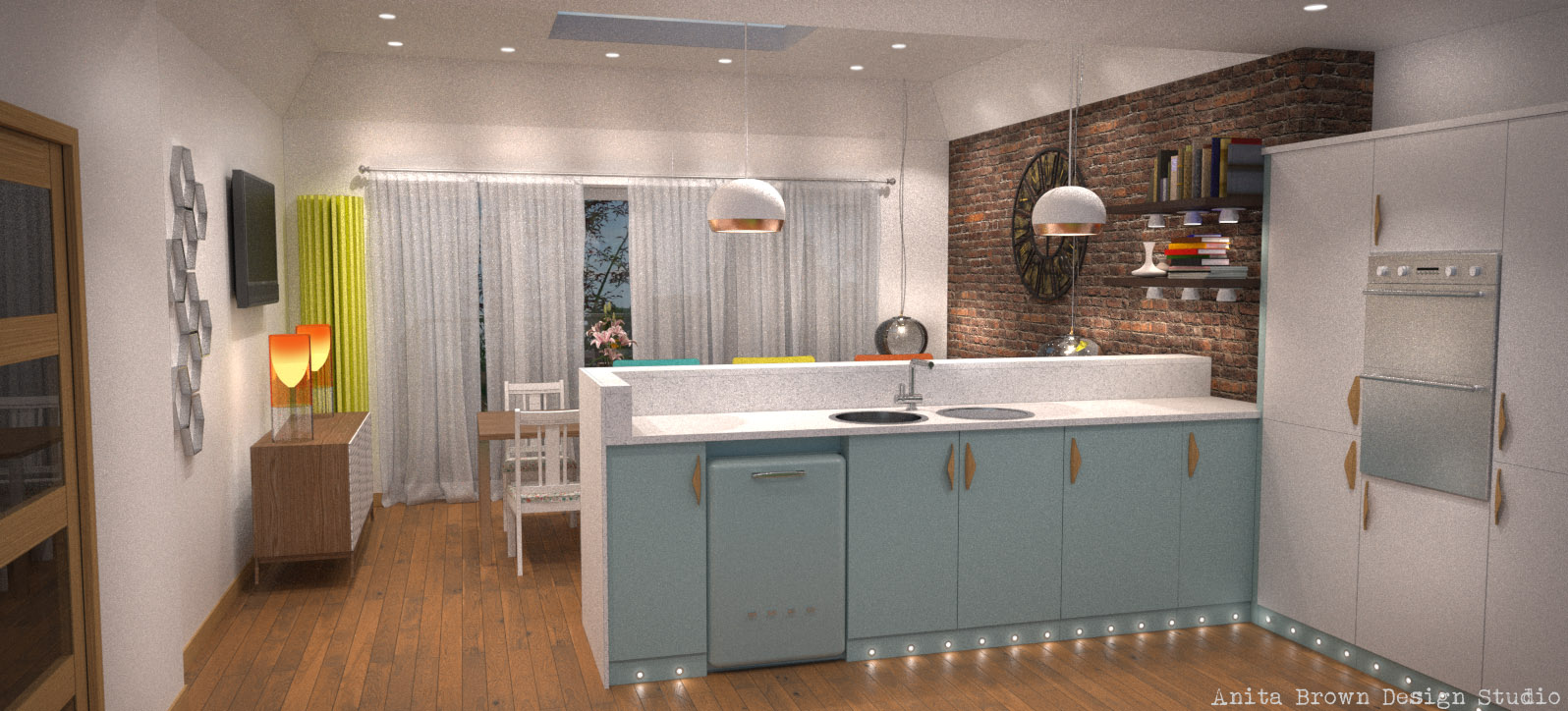Interior Rendering - SketchUp & Maxwell Render
-
Hey guys,
Thought I'd upload my most recent 3D Visualisation commission for an open plan kitchen and dining area.
Anita



-
this is a nice picture,, but the handle door near oven machine looks like some bugs hanging on the cabinet door,,( sorry for my poor english),,:D
-
nice work Anita

-
Anita, I like the lighting and modelling work. But if all possible try to render fro at leas another 4 hours or so to reduce the graininess in the images or use a noise reducer in a photo editing program like Paint-dot-net (free) Gimp(free)Photoshop Elements($) or Photoshop($$$)for quick clearer results. Otherwise these are excellent spaces. I wonder of you changed the wooden handles to chrome what the atmosphere would be like. keep up the good work.
-
Thanks guys for your feedback. Unfortunately, this wasn't my design! It was another Designer's and I had to comply with her wishes (wooden handles). The noise issue is something that consistently aggravates me with Maxwell Render - these images were rendered for an entire weekend (around the clock). I literally ran out of time! I have Photoshop but I don't find that I'm able to reduce the noise AND retain detail. Any ideas/advice on how best to address this?
Thanks,
Anita -
Nice work Anita. I like the kitchen and those door/drawer pulls.
-
Hey Dave,
Thanks, of course you like the door pulls! They are after all your handy work! Praise the Lord for Dave!!

Anita
-
Nice renders indeed...

Don't know if it's a desired effect that they all are quite grainy...?

Also... They seem a tad too bright for my taste...
Hope you don't mind, I just took them into Adobe Lightroom, where you can adjust the white-balance, tone as well as remove noise/grain...

-
Frederik,
I don't mind you playing around at all - the problem with adjusting contrast, saturation levels etc. is that when these images PRINT, they are far too dark. I have conducted limited research into the problem of images appearing brighter on screen than they do in print, which has been made even more problematic because of todays backlit monitors. The image that you think appears too bright on screen will be much darker on paper and because these are usually presented on hard copy, I have to take that into consideration when finalising the image settings. I have had to calibrate my laptop to try and gauge how the image will appear when printed, as opposed to how it appears on screen.
The graininess is not something I strive to achieve! These images were rendered for a continuous 40 hours using my lowly laptop. When they are presented on paper, they are smaller and therefore the noise is less noticeable. My gripe with removing noise is that it blurs the detail in the overall image. I'm hoping that when I purchase a dedicated rendering workstation that is more powerful, that I will be able to achieve crisper images.
Anita
-
@unknownuser said:
Frederik,
I don't mind you playing around at all - the problem with adjusting contrast, saturation levels etc. is that when these images PRINT, they are far too dark. I have conducted limited research into the problem of images appearing brighter on screen than they do in print, which has been made even more problematic because of todays backlit monitors. The image that you think appears too bright on screen will be much darker on paper and because these are usually presented on hard copy, I have to take that into consideration when finalising the image settings. I have had to calibrate my laptop to try and gauge how the image will appear when printed, as opposed to how it appears on screen.
The graininess is not something I strive to achieve! These images were rendered for a continuous 40 hours using my lowly laptop. When they are presented on paper, they are smaller and therefore the noise is less noticeable. My gripe with removing noise is that it blurs the detail in the overall image. I'm hoping that when I purchase a dedicated rendering workstation that is more powerful, that I will be able to achieve crisper images.
Anita
I have noticed with Maxwell Render (if you have not already) try to use mxm materials and lights if you are going to be doing final renders. I have found that it helps with render time and graininess.
EB
-
@unknownuser said:
...the problem with adjusting contrast, saturation levels etc. is that when these images PRINT, they are far too dark.
That's a fair and valid point...

-
@frederik said:
@unknownuser said:
...the problem with adjusting contrast, saturation levels etc. is that when these images PRINT, they are far too dark.
That's a fair and valid point...

That depends on the media you are printing on to! Meaning that the media isn't accepting enough ink loading.
In your scene what are the values of the whites used? They should be limited to 220,220,220 RGB. Could account for the amount of noise.
-
Hi Richard, that's an excellent point re: RGB of white. I think I used 240, 240, 240. I have since reduced it to 220, 220, 220 and it works a treat

Although, I still have to disagree with your opinion re: not enough ink loading. When I print the renders, I use a professional printing company and the initial result can still be too dark. I usually have to fiddle with the exposure settings (or sometimes go back to the render and adjust the ISO etc.) and then try printing it again. They have also confirmed that most images will always print darker than on screen.
-
Very nice!
-
usually I use Topaz Denoise for noise reduction. It is a usefull plugin for Photoshop.
-
Thanks for that tip
 I've heard lots of good things about Topaz!
I've heard lots of good things about Topaz! -
Advertisement







